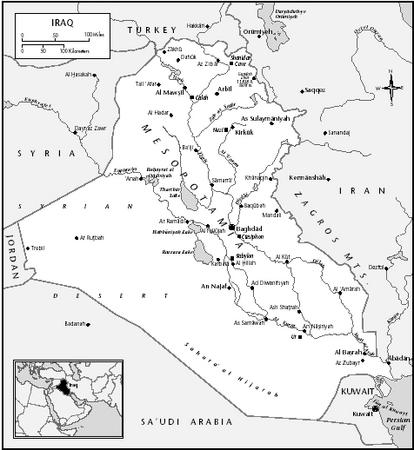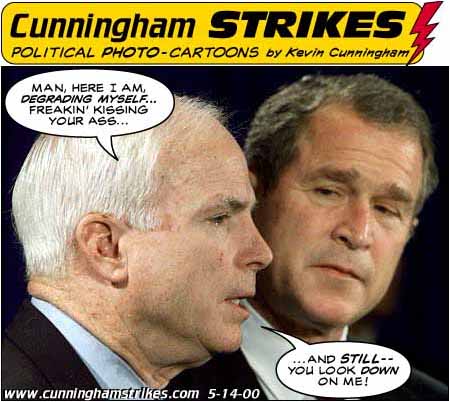[Originally posted on goofyblog 2.13.07] 
Post-traumatic stress disorder (PTSD) is the most common psychological injury of war. Experts have found evidence of PTSD in troops from every major American war – from WWI, when it was called combat fatigue, and WWII, when it was dubbed shell shock, to as far back as the Civil War, when it was called soldier’s heart. Even in the 17th century, German doctors noticed psychological scarring among combat veterans, and they named the condition heimwah, meaning homesickness; centuries before that it was called nostalgia. In any given war, historians conclude, an average of 10-20% of fighting soldiers are afflicted.
PTSD is brought on by a “death encounter,” an existentially profound brush with mortality in which death is perceived as a real possibility rather than an abstraction. All men do not respond equally to these death encounters. Highly intelligent people seem better equipped to survive a trauma unscathed, while those who score low on IQ tests seem to suffer the most, according to several studies. The trauma “explodes the cohesion of consciousness,” in the words of Jonathan Shay, a PTSD expert at Boston University.
According to a landmark study conducted by Army researchers and published in The New England Journal of Medicine, PTSD rates for soldiers in Iraq and Afghanistan are running between 10 and 15 percent.
This equates to around 10,000 cases per year since the Afghan and Iraqi began. Yet, in the first half of 2006, only 716 soldiers were diagnosed and evacuated because of PTSD. Why?
Well, initially it was because after Bush declared the Iraq invasion “Mission Accomplished,” the military recalled the handful of mental health teams in Iraq and Kuwait. And the Department of Defense (DOD) budget submitted before the war started had a zero in the line item for mental health casualties, because they never planned for a long war or an occupation.
But then it got worse. A failed soldier represents a failed war. So for the past 3 years, neo-cons in the DOD and the Department of Veteran Affairs (VA) have taken steps to downplay the psychological toll of the war. DOD doctors are being pressured to limit their diagnoses of PTSD.
And worse. After the head of the VA, Anthony Principi, testified in 2004 before Congress that the VA lacked the funds to take care of the influx of veterans, he was replaced by neo-con James Nicholson. Nicholson made attempt after attempt to undercut PTSD diagnoses, attempting to contradict and supersede the American Psychiatric Association’s definition (which is the standard).
“Iraq is Vietnam without the water.” Hang around soldiers long enough and you will hear one of them say this. Actually the statistics suggest Iraq is a lot scarier than Vietnam. An exhaustive study of 303,905 veterans of Iraq and Afghanistan done by a team of military doctors from the Walter Reed Army Institute of Research showed that combat exposure is near universal and 24/7 in Iraq. The likelihood of a soldier having to face live fire is higher than in any previous American war.
- 93% of Operation Iraqi Freedom veterans report having been shot at;
- Some 77% have pulled the trigger in an attempt to kill, roughly 3 times the trigger rate of WWII;
- 95% have seen dead bodies; and
- 89% reported having been ambushed or attached.
There is no safe zone in an urban war insurgency.
The living conditions are extremely stressful. Think Burning Man without any amenities for months on end.
Soldiers live in cramped, dusty conditions in searing 110-degree heat, enduring ambushes in the morning and lethal mortar attacks at night. Tight restrictions on Americans in Iraq bases on porn and alcohol add to this brew.
The diagnosis and long-term treatment of PTSD is one of the many hidden costs of this war. Long-term treatment of this disorder can cost more than $1 million over the course of one afflicted veteran’s life. Indeed, the VA has recently been inundated with Vietnam vet’s suffering from PTSD who’ve found that the VA pharmacy is less costly than Medicare prices. This is one of the line items in Nobel Prize-winning US economist Stiglitiz’s determination of the true cost of this war ($2.37 trillion and counting).
But the Bush administration never figured those costs in. The orders have been given: the pressure is on to under-diagnose the problem to save face and to save money. So, sick, mentally-ill men are released into the general population and denied treatment even when they seek it.
Jason Burgoyne (pictured above) was one of those men. Burgoyne’s commander in Kuwait overrode Army medic Adam Kroll’s diagnosis of evacuation and treatment in an Army hospital in Germany. Instead he ordered that this “hero…should be with his men,” and shipped him back to the States with his unit. When he got back to Georgia, his mom escorted him to an Army hospital where he had a 5-minute phone conversation with an Army psychiatrist and was then released. 2 days later Burgoyne attacked a fellow soldier, stabbing him 32 times. He’s now doing 20 years in the mental ward of a Georgia prison.
And what of Adam Kroll? He was dishonorably discharged for his clash with that commander. Kroll comes from a military family: his father, brother, mother and ex-wife have all served. So, he had protested the commander’s decision to release Burgoyne back to the States with his unit. As a whistle-blower he was punished for it.
This is the true face of the neo-cons and the Bush administration: cover-up the true costs and the pain of war.
In the new commercials for the Army, they show a young person (usually of color) speaking directly to the camera, as if talking to a parent, explaining all of the benefits they’ll receive by joining the Army. What those kids don’t know is that if you get hurt mentally in the fog of war, you won’t receive the help that may put you back together again. For some, that may be worse than never coming back at all.
John Brown went off to war to fight on a foreign shore.
His mama sure was proud of him!
He stood straight and tall in his uniform and all.
His mama’s face broke out all in a grin.
“Oh son, you look so fine, I’m glad you’re a son of mine,
You make me proud to know you hold a gun.
Do what the captain says, lots of medals you will get,
And we’ll put them on the wall when you come home.”
As that old train pulled out, John’s ma began to shout,
Tellin’ ev’ryone in the neighborhood:
“That’s my son that’s about to go, he’s a soldier now, you know.”
She made well sure her neighbors understood.
She got a letter once in a while and her face broke into a smile
As she showed them to the people from next door.
And she bragged about her son with his uniform and gun,
And these things you called a good old-fashioned war.
Oh! Good old-fashioned war!
Then the letters ceased to come, for a long time they did not come.
They ceased to come for about ten months or more.
Then a letter finally came saying, “Go down and meet the train.
Your son’s a-coming home from the war.”
She smiled and went right down, she looked everywhere around
But she could not see her soldier son in sight.
But as all the people passed, she saw her son at last,
When she did she could hardly believe her eyes.
Oh his face was all shot up and his hand was all blown off
And he wore a metal brace around his waist.
He whispered kind of slow, in a voice she did not know,
While she couldn’t even recognize his face!
Oh! Lord! Not even recognize his face.
“Oh tell me, my darling son, pray tell me what they done.
How is it you come to be this way?”
He tried his best to talk but his mouth could hardly move
And the mother had to turn her face away.
“Don’t you remember, Ma, when I went off to war
You thought it was the best thing I could do?
I was on the battleground, you were home . . . acting proud.
You wasn’t there standing in my shoes.”
“Oh, and I thought when I was there, God, what am I doing here?
I’m a-tryin’ to kill somebody or die tryin’.
But the thing that scared me most was when my enemy came close
And I saw that his face looked just like mine.”
Oh! Lord! Just like mine!
“And I couldn’t help but think, through the thunder rolling and stink,
That I was just a puppet in a play.
And through the roar and smoke, this string is finally broke,
And a cannon ball blew my eyes away.”
As he turned away to walk, his Ma was still in shock
At seein’ the metal brace that helped him stand.
But as he turned to go, he called his mother close
And he dropped his medals down into her hand.
–Bob Dylan, 1963
This piece was written using large parts of Mark Boal’s article, The Real Cost of War, in the March ’07 Playboy.


















